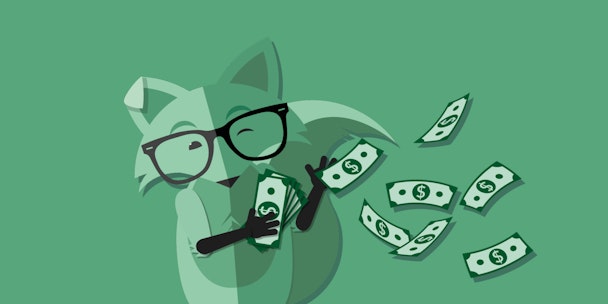‘We’re out there having fun’: how Ryan Reynolds-owned Mint is taking on mobile’s mightiest
Mint Mobile punches well above its weight in a competitive US wireless sector. As part of our deep dive into all things mobile, we catch up with its marketing chief, Aron North, to find out the secrets to Mint’s sauce.

“We’re a fun brand doing fun things. But we’re also a category disrupter looking to really make waves and make some moves.”
The US wireless market is a tough field. Market share is divided roughly between Verizon, AT&T, T-Mobile and Sprint (itself owned by T-Mobile). In the middle of this fierce competition, challenger network Mint Mobile has dug a niche for itself with aggressive pricing and an advertising strategy that combines humor and Hollywood in equal measure.
The company, you’ll recall, is part of Deadpool actor Ryan Reynolds’s eclectic business empire, which also includes a gin distillery and a north Wales football club, and has earned a fanbase for mischievous ads. A recent spot literally depicted execs at its rivals in league with the devil.
According to Aron North, marketing is both its secret weapon and a major part of its corporate identity. ”It is an incredibly important, incredibly powerful tool,” says the Mint Mobile chief marketing officer. ”We are out there doing marketing to make people aware of Mint – how and why it is different. But marketing is not just advertising. We’ve built marketing into the product.”
A case in point was when, at the beginning of the pandemic, the network decided to offer customers unlimited data, free of charge, for three months. The offer was announced to them by way of a voicemail recorded by Reynolds (who The Drum caught up with last year) himself, which in turn triggered a flood of return messages from customers thanking him, which North’s team was then able to use for further marketing creative.
After a stint at Taco Bell, North joined Mint’s parent company Ultra in 2015 and helped launch the Mint brand. When Reynolds took an ownership stake in 2016, he stuck around, building up a full-service in-house agency that now provides berths to 20 creatives.
Tricks like Reynolds’s answerphone machine monologue are the product of a close relationship between agency and client – and of North’s tenure as CMO, which at five years is well above the industry average.
Maximum Effort, Reynolds’s own agency, produces much of Mint’s creative output and the ”big stunts”, such as a print ad in The New York Times explaining the brand’s decision not to run a big budget Super Bowl spot.
North is full of praise for the set-up. ”Having an owner also be an owner of your agency, and having your owner’s business partner [George Dewey] run the agency, has revolutionized the agency client relationship because our broad strategic vision is aligned... it gets cascaded throughout that agency and everybody is aligned on where we’re going.
”Their creative product is exceptional. Everything Maximum Effort touches becomes gold... I have been nothing but impressed with the creative product and the way it is pushing us as the client.”
It also means that potential tensions can be neutralized before they escalate, he says. ”We would never get to a point of a review [with Maximum Effort]. If we had a creative issue or a strategic issue, we would solve it before it ever got there.”
Persuading consumers to ditch one carrier for another is the name of the game, though, and a challenge even for its star owner and amusing creative.
Speaking from his home in southern California, North is pretty zen given the size of that task. ”We’re a fun brand doing fun things. But we’re also a category disrupter looking to really make waves and make some moves.”
Still, he admits that he can’t hope to outgun the media spending of its major rivals. ”Look, I’m never gonna outspend Verizon and AT&T. These people have billion dollar budgets. Rather than fight them where they are, we’re fighting where they aren’t and talking to people in a way that other brands don’t.” In contrast, its competitors, he says, are ”quite frankly boring, while we’re out there having fun and being light”.
Instead, he points to one of the less celebrated marketing principals – price. Since it launched, Mint has aimed to undercut the principal market players with a series of no-frills, low-cost deals enabled by its DTC model and lack of real estate costs compared to rivals’ main-street-first model.
”This is a no-net-new subscriber game. This is all share steal. What we’re looking at is where the pain points are in the space, talking to our customers on a daily basis and then solving those pain points.
”Cost is the number one reason for dissatisfaction in the US cell market because coverage is great for all the big carriers. If it’s a commoditized product, then really what you’re competing on is how you create value and differentiation. For us, it’s ease and price.”
Concluding, he suggests that attention from the network’s rivals is a sign of success, not a concern. ”We think what makes us special is the fact that we’re digitally native. We are born and bred in this space. And we’re doing something completely unique. What’s been most interesting to me is to watch competitors launch copycat brands or flanker brands because we’ve seen such success. So maybe the question is, how are they going to deal with us?”

